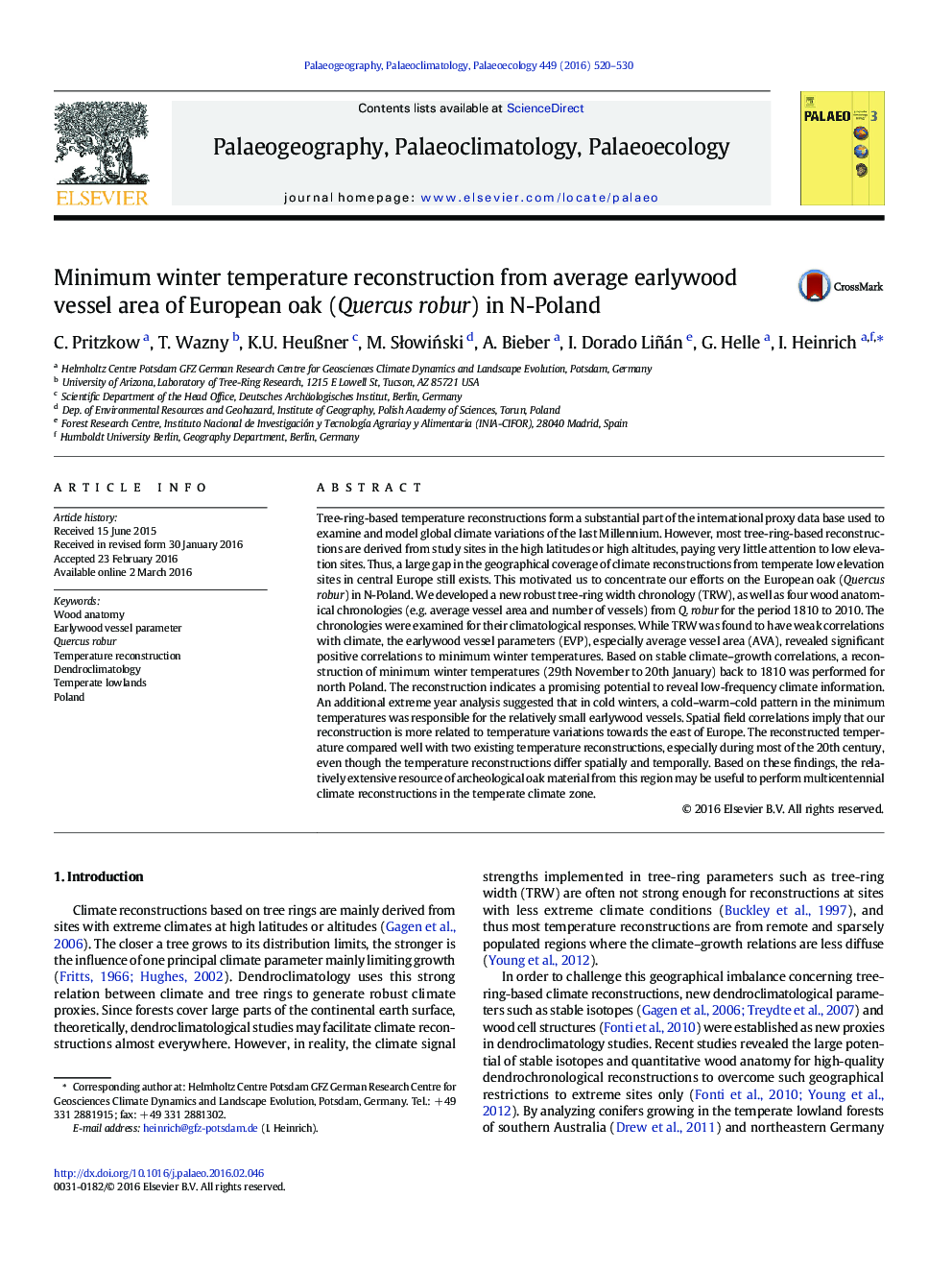| Article ID | Journal | Published Year | Pages | File Type |
|---|---|---|---|---|
| 4465783 | Palaeogeography, Palaeoclimatology, Palaeoecology | 2016 | 11 Pages |
•We developed new wood anatomical chronologies from Q. robur in north Poland for the period 1810 to 2010.•All earlywood vessel parameters revealed significant temperature correlations.•A minimum winter temperature (29th November to 20th January) reconstruction was performed for north Poland.
Tree-ring-based temperature reconstructions form a substantial part of the international proxy data base used to examine and model global climate variations of the last Millennium. However, most tree-ring-based reconstructions are derived from study sites in the high latitudes or high altitudes, paying very little attention to low elevation sites. Thus, a large gap in the geographical coverage of climate reconstructions from temperate low elevation sites in central Europe still exists. This motivated us to concentrate our efforts on the European oak (Quercus robur) in N-Poland. We developed a new robust tree-ring width chronology (TRW), as well as four wood anatomical chronologies (e.g. average vessel area and number of vessels) from Q. robur for the period 1810 to 2010. The chronologies were examined for their climatological responses. While TRW was found to have weak correlations with climate, the earlywood vessel parameters (EVP), especially average vessel area (AVA), revealed significant positive correlations to minimum winter temperatures. Based on stable climate–growth correlations, a reconstruction of minimum winter temperatures (29th November to 20th January) back to 1810 was performed for north Poland. The reconstruction indicates a promising potential to reveal low-frequency climate information. An additional extreme year analysis suggested that in cold winters, a cold–warm–cold pattern in the minimum temperatures was responsible for the relatively small earlywood vessels. Spatial field correlations imply that our reconstruction is more related to temperature variations towards the east of Europe. The reconstructed temperature compared well with two existing temperature reconstructions, especially during most of the 20th century, even though the temperature reconstructions differ spatially and temporally. Based on these findings, the relatively extensive resource of archeological oak material from this region may be useful to perform multicentennial climate reconstructions in the temperate climate zone.
